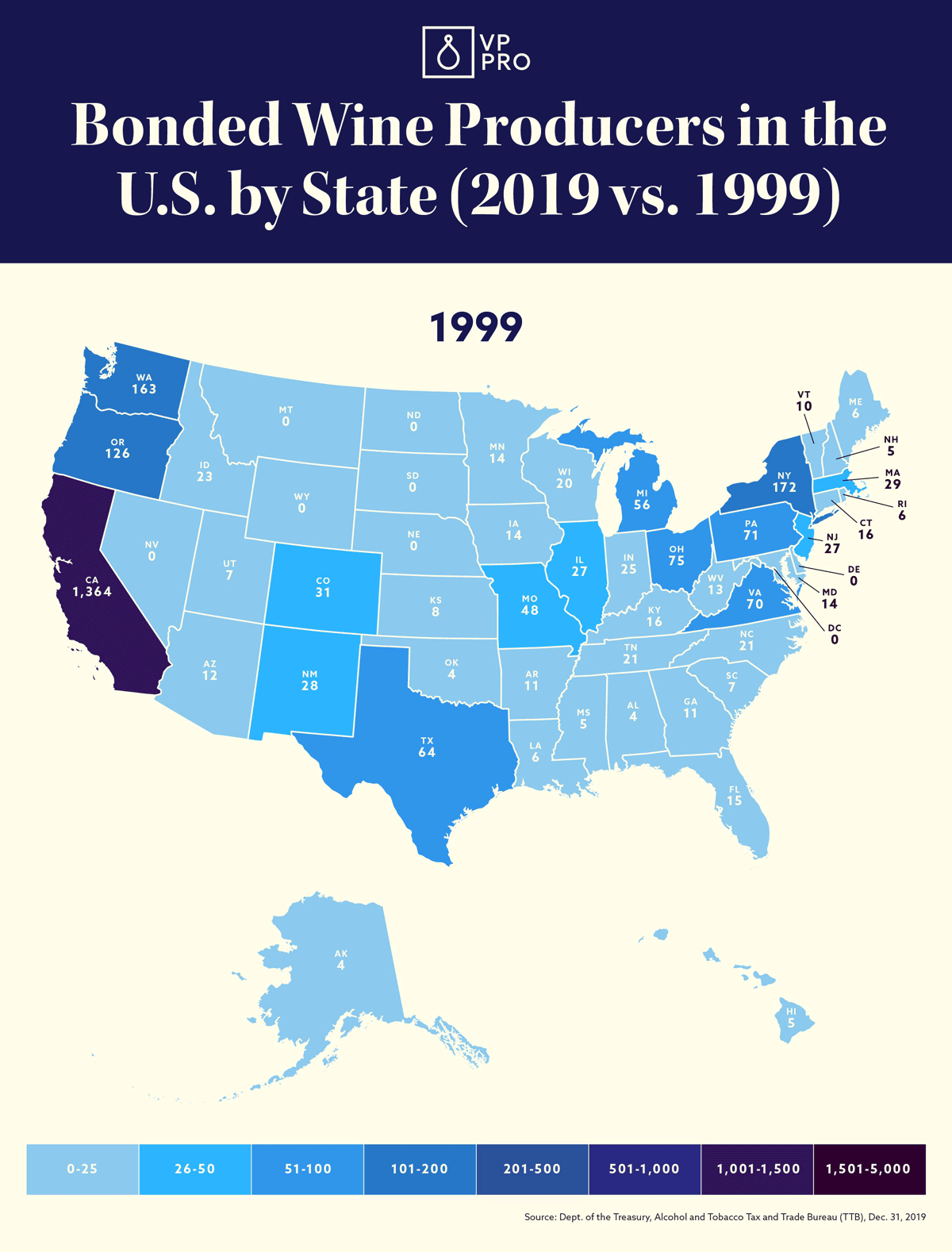A bonded winery is a winery that has taken out an insurance policy to cover its tax liabilities, and since 2015, they have generally been assumed to be large-scale operations.
Bonded wineries calculate the amount of coverage they need to insure their assets by estimating how much wine they have on their property, the alcohol content of said wine, and the ensuing price of bond coverage. Hence, the name “bonded.”
In the past, every winery was required to have bond coverage, but in 2015, the Obama Administration signed the Consolidated Appropriations Act so small wineries could operate without it.
So, as there’s now at least one bonded winery in every U.S. state, there’s clearly some serious winemaking going on in this country.
With 90 to 95 percent of U.S. wine exports coming from California, it’s no surprise that there are over 5,000 bonded wineries across the Golden State. However, the fact that that number has quadrupled since 1999 leads us to wonder how many more wineries will pop up by 2030.
Only seven states entered 1999 without a bonded winery, and by 2019, each of these states had at least 10. Of these states, Nebraska now leads the way with a recent surge to 40 bonded wineries. Even Washington, D.C., has gained nine new bonded wineries since 1999.
Washington State came in second place behind California, with 1,207 bonded wineries in 2019. While well behind California, Washington still beat out Oregon, which had only 789 bonded wineries that year. Even Hawaii more than tripled its number of bonded wineries in the last 10 years, growing from five to 16. To see what other states turned water into wineries, check out the map below.
This story is a part of VP Pro, our free platform and newsletter for drinks industry professionals, covering wine, beer, liquor, and beyond. Sign up for VP Pro now!
![Bonded Wine Producers in the U.S. by State 2019 vs. 1999 [Map] Bonded Wine Producers in the U.S. by State 2019 vs. 1999 [Map]](https://vinepair.com/wp-content/uploads/2020/11/bondedwinerymap_card-375x450.jpg)
